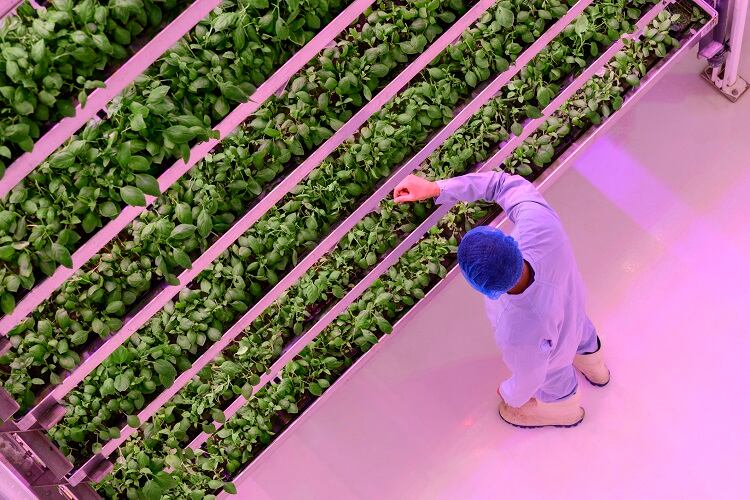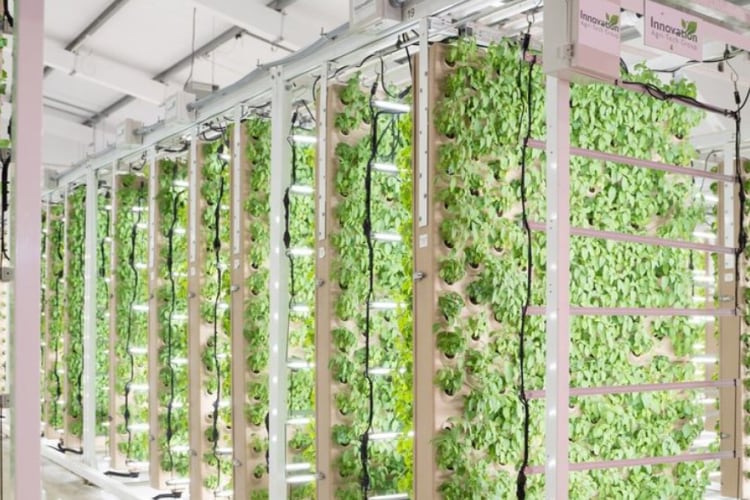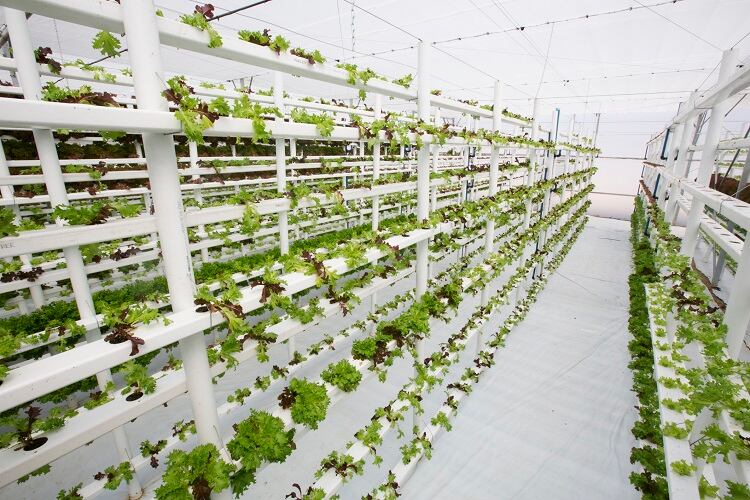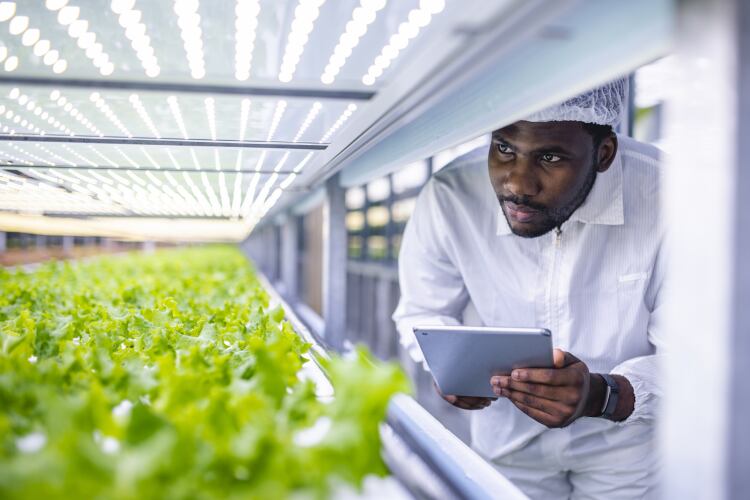Vertical farms or ‘plant factories’ – terms which describe vertically-stacked, fully controlled environments used to produce food – have the potential to increase global food production in the coming years.
It is estimated that by 2050, the world’s population will have risen to 9.8 billion. And of these almost 10 billion people, 67.2% are expected to live in urban areas. This means that globally, food production must increase by at least 70%, estimates the UN.
Because vertical farming technology is not nearly as dependent on limited natural resources – such as land and fresh water – as conventional agriculture, it is often touted a more environmentally sustainable alternative.
But fresh research out of Scandinavia is questioning vertical farming’s sustainability performance, suggesting the technology is too energy-intensive and responsible for higher greenhouse gas (GHG) emissions than open-field cultivation.
At the same time, UK-based consultancy IDTechEx has raised concerns that the ‘notoriously power-hungry’ sector, which requires ‘large amounts of energy to operate’, may struggle to ride out the storm of rising energy prices.
Is vertical farming deserving of its ‘sustainability halo’?
Vertical farming is one of several technologies being developed at a ‘considerable pace’ to facilitate the transformation towards achieving food system sustainability. According to researchers at Stockholm University and the University of Copenhagen, these food system technologies are often surrounded by a ‘sustainability halo’.
But in a new systematic scoping review published in Nature Food, considering the three pillars of sustainability – people, planet, and profit – the researchers have been left unconvinced future system technologies, including vertical farming, is entirely deserving of such a halo.
Overall, the researchers concluded that vertical farming has a mixed sustainability performance. Backing up vertical farming’s sustainability credentials is the finding that growing vegetables by vertical farming outperforms cultivation on-field and in greenhouses in terms of land use and water use. One study even modelled that lettuce production in vertical farming in the Netherlands could require 95% less water compared with current production in greenhouses due to its water-recycling potential.
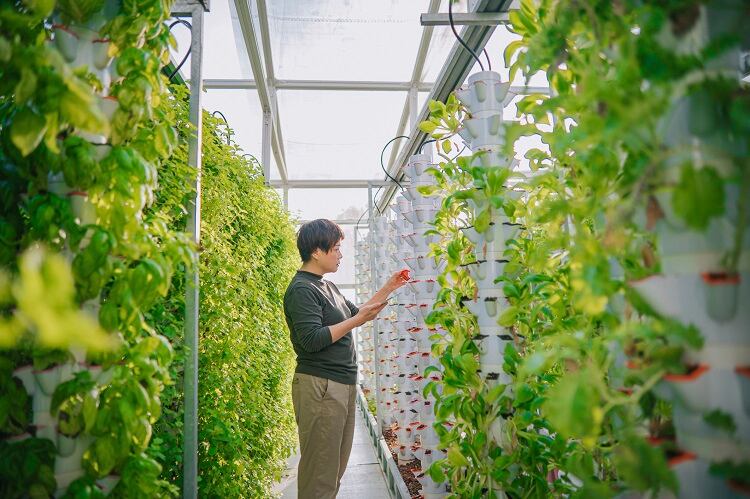
However, the researchers identified agreement that vertical farming is responsible for higher GHG emissions than open-field cultivation – but lower than greenhouses. Further, vertical farming was assessed less efficient in terms of energy inputs than on-field cultivation and greenhouses.
“The degree of environmental impact has been found to depend to a large extent on the growing substrate, packaging material, and the source of energy,” noted the study authors. “Regarding economic indicators, we found agreement that vertical farming has a higher yield production than greenhouses, leading to slightly higher economic revenues.”
Concerning other aspects of sustainability, the Scandinavian team found ‘little research’. “We found a distinct lack of evidence modelling the socio-economic implications of scaling vertical farming,” said Anne Charlotte Bunge.
FoodNavigator sought comment from the Association for Vertical Farming but did not receive response ahead of publication.
Re-thinking energy sources and consumption
The researchers’ findings on vertical farming’s relative inefficiency in terms of energy inputs is pertinent, given rising energy costs. In vertical farming, energy costs often form one of, if not the largest part, of their operational expenditure, according to IDTechEx technology analyst Brendan Beh, who has raised concerns about the sector’s future.
“Even before rising energy prices, many vertical farms have already found it challenging to achieve profitability due to the high costs of operation; with dramatic increases in the cost of energy, this could be the final nail in the coffin for many vertical farms.”
Short-term wins, however, could help reduce the sector’s vulnerabilities, suggested the tech analyst. There is an immediate need for vertical farms to decouple themselves from the price of gas, for example, which Beh said could be achieved through increased reliance on renewable energy sources, such as through greater integration of photovoltaics – which may be possible through direct connections to solar farms.
“Alternatively, local biomass boilers could potentially alleviate energy costs by making use of waste wood generated from manufacturing or maintenance. Increasing the use of renewable energy may require significant capital investment but would provide greater cost efficiencies over the longer term.”
Reducing energy consumption could also help vertical farming operators weather the storm. Although not a straightforward solution, since energy-intensive LED technology is fundamental to vertical farming systems, some operators are periodically modulating energy delivery to lights – as opposed to a constant energy supply, explained Beh.
“This potentially reduces the average energy consumption without affecting, or possibly even enhancing, crop growth.”
Shifting from low-value to high-value crops
Another alternative for vertical farming companies would be to change their business strategy. Instead of producing low-margin, high-volume crops such as lettuce and microgreens, they could shift their focus to high-value crops with superior taste profiles, suggested the IDTechEx analyst.
“A particularly noteworthy example would be seen in [Japanese vertical farming operation] Oishii: the Omakase strawberries grown by the company are noticeably sweeter than many conventionally farmed counterparts, and these are used as one of the selling points to justify the comparatively higher price point.”
Other premium products, such as medicinal plants and herbs, could also yield premium prices, according to Beh. “Such strategies may play well to the strengths of vertical farms and increase the attractiveness of their produce.”
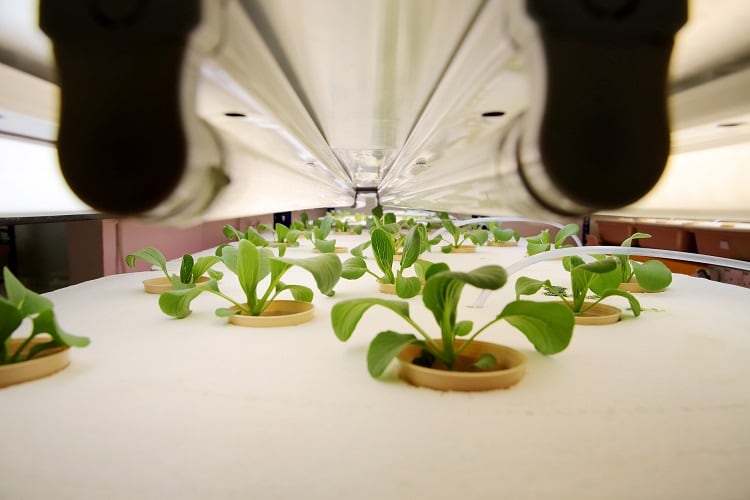
How long high energy costs will persist is unknown, but it could be for ‘some time’. While this period will could prove ‘intensely challenging’ for vertical farms, the tech analyst suggested it also presents a ‘crucial driver’ for vertical farms to increase their efficiency.
“Indeed, the next few years may provide a crucible to forge the vertical farming industry into one that can finally provide major competition towards conventional agriculture.”
Source: Nature Food
‘A systematic scoping review of the sustainability of vertical farming, plant-based alternatives, food delivery services and blockchain in food systems’
Published 3 November 2022
DOI: https://doi.org/10.1038/s43016-022-00622-8
Authors: A. Charlotte Bunge, Amanda Wood, Afton Holloran and Line J. Gordon.


